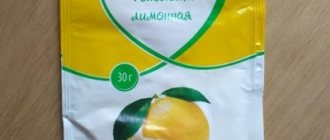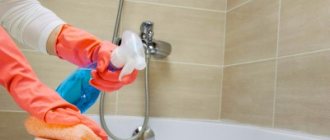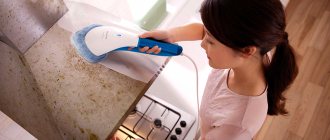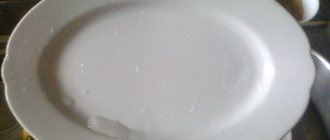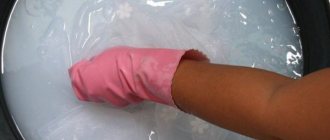Mechanical or chemical impact leads to damage to the surface of the bath. Enamel and acrylic lose their smoothness and whiteness, and moisture, dirt and mold penetrate into microscratches.
Dark plaque can occur even with proper care, so owners are faced with the question of how to whiten a bathtub at home without increasing damage to the material.
Why does the coating turn yellow?
Reasons for yellowing of the coating:
- Hardness of water. With a high content of calcium and magnesium salts in the water, a thin rough layer forms on the surface of the sanitary bowl. It is more friable than acrylic or enamel, so dirt, pigments and other coloring substances are easily retained in it. The dark film is removed from the bath along with a layer of mineral salts.
- Chlorinated water. Chlorine-containing solutions harm the acrylic coating, reducing its resistance to damage and contamination. Despite the low chlorine content, water saturated with it negatively affects the condition of the surface. It is especially dangerous for thin plastic liners and coatings formed from liquid acrylic.
- Rust in water. Corrosion of pipes in the general house system, heavy rainfall, repairs of water supply networks and poor water purification lead to an increase in the concentration of iron oxides. Rust gives the water a yellow tint and settles in limescale, pores and microdamages in the coating. Yellow or orange streaks may appear due to oxidation of the metal structure on the bowl (for example, the mesh on the overflow hole). Rust spots appear around deep scratches on the surface of steel and cast iron bathtubs.
- Soap and dirt deposits. If you do not wash and dry the bathtub after each use, a layer of skin particles, dirt, sebum and soap will form on its surface. Mixing with mineral salts, organic waste forms a durable film of gray or yellowish color.
- The use of products with natural or synthetic pigments. Hair dyes, tonics, coloring masks, henna and herbal infusions can turn the coating yellow, light brown or rusty. Decoctions of oak bark, saffron, turmeric, onion peels, walnuts, etc. have strong coloring properties.
Improper surface care (abrasive cleaning, use of acids and alkalis) damages the coating and accelerates the formation of plaque. Strong reagents can quickly clean off any dirt, but complicate cleaning in the future.
Causes of plaque
The most harmless stains appear due to the evaporation of soapy water, its settling on the walls of the bathtub and subsequent drying. They are relatively easy to clean with a regular sponge and hot water. If you add any cleaning agent to this, the process can be made easier and faster.
Cleaning the bath correctly - video:
Brown stains are formed from the presence of rust particles in the water, which are washed out in microscopic quantities from the inner surface of water pipes. Most of the city communications were built under Soviet rule and are made of metal, which tends to oxidize with all the ensuing consequences. The effect is especially noticeable if you let the water stand for some time.
Damaged surfaces usually acquire a gray tint. Improper care and use can cause microcracks and small scratches to appear on the glossy finish. Dirt from damaged areas is quite difficult to remove, but it appears on them immediately after use.
How to whiten an acrylic bathtub
It is recommended to clean an acrylic bathtub only with a soft sponge using mild soap solutions and special gels that are suitable for plastic surfaces.
Solvents, strong acids, alkalis, ammonia and chloride products are not suitable for cleaning the bowl.
Along with compositions to get rid of yellowness, you can use shower gel, washing gels and powders.
Laundry soap and dish soap
A saturated solution of laundry soap and dishwashing detergent can replace gel for cleaning plumbing fixtures.
To clean the surface, you can use the following recipes:
- Grate the laundry soap on a coarse grater, dissolve in water to a gel consistency, spread on the bath, leave for a few minutes and rub thoroughly with the soft side of a washcloth.
- Soak the soap, spread the sponge thickly and rub the darkened bowl with force.
- Combine 50 g of soda, 25 g of grated soap and 0.5 liters of water, heat, stir until a homogeneous mass is formed, apply to dirt and rub.
- Apply undiluted dish soap to the bathtub, leave for 20-25 minutes, rub with a soft washcloth.
For severe stains, you can use bleaching soap, which contains enzymes and bile.
After applying the soap or gel, rinse the bowl thoroughly and dry it with a towel. Detergent stains may remain on a wet surface.
Washing powder
Dry powder contains abrasive particles that remove plaque well, but can damage the surface. To protect the plastic, you must first dilute the powder with water (1:3-1:4) and mix thoroughly until the particles are completely dissolved.
The use of bleaching detergents can damage the integrity and darken the acrylic.
Shower gel
Shower gels are used similarly to dishwashing detergents, soap gels and other liquid products. It is prohibited to use gel scrubs that contain abrasive particles.
Special means
Store-bought gels, foams and solutions gently clean the bathtub and do not leave damage to the plastic surface.
The following remedies are effective:
- "Akrilan";
- Frosch;
- Cif Cream Ultra White;
- "CAMA" for acrylic shower cabins and bathtubs;
- Mr. Profi;
- LOS Amway;
- Unicum;
- "Cinderella".
For severe contamination, you can also use Cillit Bang and Pemolux. They are not suitable for permanent care: the first product contains oxalic acid, and the second contains small particles of soda.
When choosing a gel or liquid for treating plumbing fixtures, you need to carefully study the composition. It should not contain alkalis, chlorine, ammonia and ammonia, acetone, formic acid, formaldehyde and alcohol.
Traditional methods
You can also use folk remedies to clean plastic:
- Lemon juice. Lemon whitens the bowl well and removes traces of paint, herbal infusions, mineral salts and rust. To remove yellowness, you need to dilute the juice with water in a 1:1 ratio and apply for 15-20 minutes. Acetic acid has a similar effect. Table vinegar (6-9%) can be used following the same algorithm.
- Peroxide. It is an intense oxidizing agent, so it removes pigments well and whitens plumbing fixtures. To clean, you need to combine 50 ml of water and 25-50 ml of hydrogen peroxide (3%), apply for 10-15 minutes and rinse. When spot treating dark spots, you can mix peroxide with ammonia (1:2). The exposure time of the combined product is 5-10 minutes.
- A mixture of soda and vinegar. Dilute 3-5 tsp. soda with water until it becomes a paste, apply to the yellowed areas and leave for 20-30 minutes. Dissolve 1 tbsp. citric acid in 200 ml of water, generously moisten a soft sponge with it and rub the treated areas. Leave the resulting product for another 10 minutes and then rinse with water.
Acrylic does not tolerate high temperatures well, so you can wash the bathtub with warm, but not hot water.
Cleaning common stains
In the hardware sections of markets, bath detergents that help make your bath snow-white are presented in a wide range. Buyers can choose drugs according to their preference. Moreover, it is not at all necessary that cheaper products have worse cleaning properties than expensive ones.
Cleaners
The method for using commercial bath cleaners is usually the same (unless there are specific instructions on the label):
- Moisten the surface to be cleaned.
- Apply the product using a sponge.
- Remove chemical residues with a stream of water.
Regular cleaning using your usual cleaner will extend the life of your bathtub and make it snow-white.
When purchasing detergents, look at their composition: too aggressive acids, alkalis, as well as coarse abrasive particles can damage the surface, making it dull and dull. This is especially true for acrylic coatings.
Instructions for bleaching a cast iron bathtub
Cast iron bathtubs are covered with a layer of enamel, which protects the metal from damage and moisture.
The protective coating can chip from impacts, be scratched by sharp objects and change color when exposed to strong acids and alkalis. Long-term use increases the fragility of the material.
Vinegar
Acetic acid in a concentration of up to 9% is a safe and effective remedy that allows you to remove limescale, remove dirt and disinfect porous surfaces from fungus.
The following recipes can be used for cleansing:
- Vinegar bath. Take a full bath of warm water, dilute 1 liter of table vinegar in it and leave for 6-12 hours. To prevent strong evaporation of the solution, you can cover the bowl with plastic wrap. After exposure, drain the water, wipe the enamel with a washcloth and rinse with water.
- Acid applications. Moisten pieces of gauze or paper towels with vinegar, place them on areas with rust and plaque stains, and leave for 8 hours. Remove the applications, rub the stains with a sponge soaked in vinegar, and wash the bath thoroughly with warm water.
- Vinegar, baking soda and bleach. This method is used only to remove stubborn stains and whiten old enamel. The cast iron bowl should be washed and rubbed with a mixture of sodium bicarbonate, soda ash and water. After 10 minutes, mix 50 ml of table vinegar and liquid oxygen bleach, apply over the soda and leave for half an hour. After treatment, rub the surface with a washcloth, leave for another 5-7 minutes and rinse thoroughly with water.
Soda
Sodium bicarbonate (soda) can be combined with weak acids and soap. It is not recommended to clean enamel with a mixture of several abrasives (for example, soda and salt).
Traces of ammonia paint can be removed with fluoride toothpaste. To do this, you need to carefully apply the paste generously on them and leave for 15 minutes. If the dark plaque has not disappeared, then you can squeeze a small amount of paste onto a soft-bristled brush, sprinkle baking soda on top and gently rub the stains.
Lemon acid
Citric acid removes the limescale layer, dissolves rust and brightens the old enamel coating. To whiten the bowl, you can use either diluted citric acid powder (1-2 tablespoons per 200 ml of warm water) or lemon juice (1:1 with water).
Bleach
Chloride agents weaken the protective coating, making it rough and vulnerable to chemical attack. Only oxygen bleaches are used to whiten enamel.
They contain perhydrol (concentrated hydrogen peroxide), and gels and powders contain sodium percarbonate. To remove stains and yellowness, products such as Persol, Vanish, Chirton, Domol, etc. are suitable.
Solvents
Solvents can only be used to remove spot stains: drops of paint, traces of sealant, varnish, etc. Conditionally safe substances include ethyl alcohol, turpentine, and white spirit.
Gasoline and acetone are needed when preparing the surface for re-enamelling or coating with liquid acrylic.
Oxalic acid
Oxalic acid damages the enamel layer, so its use is permissible only in extreme cases and in a highly diluted form (4-5%). To dissolve the plaque, you need to leave it for 1-2 hours, and then rinse the bath with liquid soap.
Rust removers
To remove rust, you can use the following means:
- "Sanelit";
- Comet “7 days of cleanliness”;
- "SanClin Santik";
- a paste of mustard powder and soda (3:1);
- a solution of citric, acetic or phosphoric acid.
Preparing for cleaning
They use ordinary devices and tools that are in the house.
Bottles with sprayers do not require special equipment for application; the powder is applied with a rag after moistening the surface. Prepared:
- a porous foam sponge, since the material absorbs and releases the cleaning solution well, you can use the hard back side to remove difficult layers;
- a brush with medium-hard bristles;
- rags for cleaning and applying pastes and gels.
Protect your hands from contact with chemicals with rubber gloves, and protect your eyes with goggles. If strong-smelling agents, such as bleach, are used, the respiratory tract is protected with a respirator. They wear clothes that they don’t mind getting ruined during work.
How to whiten a steel bathtub
Steel bowls, like cast iron, are coated with a thin layer of enamel . When damaged, low-carbon iron alloys corrode faster than high-carbon ones, so steel baths are prone to spot yellowing in areas of scratches, punctures and chips of the coating.
Folk remedies
Effective cleaning methods include:
- Wash with a mixture of salt and turpentine. Mix 40-50 ml of turpentine and 5-6 tbsp. finely ground salt. Apply to darkened enamel, rub and leave for 10-20 minutes. Rub again and rinse off the mixture.
- Soaking in Coca-Cola. This drink contains phosphoric acid, which is used to remove oxides. To get rid of limescale, rust and stains, you need to cover the dirty areas with gauze soaked in Coca-Cola, leave for 1-2 hours and rub with a sponge. Wash the clean surface and wipe with a dry cloth.
For steel bowls, you can also use products recommended for cast iron baths.
Purchased funds
For a steel bath, any cleaner designed for enamel surfaces is suitable. If the product is recommended for earthenware and ceramics, then it can only be used for washing toilets, sinks and tiles.
To avoid scratches, you need to choose mild forms of chemicals: foams, creams, gels, sprays and liquids.
What products should not be used
A cast-iron bathtub with enamel is a durable product, but the coating can be damaged by the use of certain products that contain dangerous ingredients:
- alkalis;
- oxalic and hydrochloric acids;
- aldehydes.
The substances are destructive to the enamel layer on a cast iron bathtub, they damage the walls, resulting in a network of small cracks and scratches. You cannot treat the surface with brushes with metal bristles, as a similar effect will result. It is not advisable to use abrasive powders.
How to prevent yellowing of your bathtub
To prevent yellowing of the bowl you need to:
- rinse and dry it after each use, wash it with a special product at least once a week;
- avoid sudden fluctuations in water temperature;
- do not dye clothes in the bath, lubricate the surface with oil before washing off the hair dye;
- eliminate cracks, scratches and chips, promptly repair leaking faucets;
- Use mild, non-abrasive products for cleaning.
To restore the smoothness of the enamel, you can use a mild car polish and a cloth.
Rusty stains
Rust is a special coating, iron oxide, formed by the oxidation of Fe molecules. At home, you can remove rusty formations in the bathroom and make it snow-white:
- from polyacrylate: make a mixture of 250 ml water + 25 g oxalic (ethanedioic) acid. Spray on rusty areas, after 1 hour, rinse off chemicals;
- from an enamel bath: mix 100 g of table salt with 1500 ml of water. Wait until the sodium chloride dissolves. Add 1/4 cup perhydrol. Treat rusty stains. Fill heavy contamination with the mixture for half an hour, wash the cuvette;
- from a stone surface: dilute mustard powder to a thick paste, dip a washcloth, rub the stains, rinse.
General recommendations
When cleaning a bathtub, you have to deal with typical contaminants: grease residues, soap stains, limescale and rusty streams.
If the product is new and without defects, the main principle of care is not to damage the enamel surface. Most mistakes are made due to ignorance or carelessness. In order not to spoil the coating, manufacturers categorically do not recommend the following for washing enamel bathtubs:
- metal and fiberglass brushes and scrapers;
- abrasive powders;
- aggressive acids;
- concentrated chlorine-containing compounds.
Note: The resistance of enamel to chemical influences depends on its thickness, number of layers and application technology. Domestic and inexpensive Chinese baths are covered with enamel in an outdated way - in drying chambers (hot drying method). The surface of such products is fragile and often uneven. Bathtubs made in Spain, France and Germany are coated with ultraviolet-curing powder enamels, which greatly increases their wear resistance. But such products have a high price and are not always available to the average consumer.
Fighting yellow stains
The culprit of such sewage is the old pipeline in home bathrooms. Only replacing the risers can completely eliminate the problem. Liquid or dry bleach (add water to the powder first) helps eliminate stains that have already formed. Apply to yellow spots and remove after 25 minutes. As a result, the bath will become snow-white again.
Do not use preparations containing chlorine on plastic containers. An oxygen clarifier is ideal for them.
Oxygen clarifier
For pronounced red stains on enamel bathtubs, use 96% vinegar essence: soak a linen or cotton rag in it, rub the yellowness, cover the stains with baking soda. Treat again with acid, scrub with a brush, rinse. Carry out the work wearing protective gloves.
We also recommend an article on the topic of the article: How to clean a bathtub using soda and vinegar - an alternative chemical method. About this here.
Household chemicals
Household chemicals stores widely stock a variety of products from different manufacturers that can remove strong and persistent stains. In such a huge selection, it is worth highlighting a number of main brands that have already proven themselves well in the market and in households:
- Comet
- Pemolux
- Cilit Bang
- Sorti
- Domestos
- Cif
- Sarma
- Sanox
When using these products, it is important to strictly follow the instructions and use rubber gloves to avoid damaging the skin of your hands with strong chemicals. In addition, do not leave the product on the surface of the plumbing fixtures and rinse it off with hot water. All this can lead to damage to the coating.
Important! When choosing a particular cleaning product, it is important to consider the type of surface of your bathtub.
Helpful information
Tips for caring for a cast iron bathtub:
- the safest means for caring for cast iron bathtubs are alkaline compounds, for example, laundry soap;
- You need to wash and dry the bathtub after each use - this will avoid its premature damage;
- When working with caustic substances, it is necessary to protect the skin of your hands with gloves, and your respiratory organs with a mask or respirator.
All the most important and useful information about cleaning the bathroom is collected in this section of the site.
Removing traces of repairs
Most building materials pollute and also damage the enamel (polymer, stone) of the bathroom. In order not to think about how to make a bathtub snow-white after construction work, take care that it does not get dirty during the reconstruction of the room. To do this, place sheets of cardboard on the bottom of the bowl and cover with thick film on top.
Special products for removing traces of repairs
If during the renovation work the bathtub nevertheless becomes dirty and has lost its original snow-white appearance, purchase an industrial solvent for removing cement (Prosept Cement Cleaner, Unicum). Acids are added to such liquids, so they cannot be used for plastic baths. Wipe off paint splashes that get on plumbing fixtures with fresh paint before they dry. Doing this later will be problematic.

